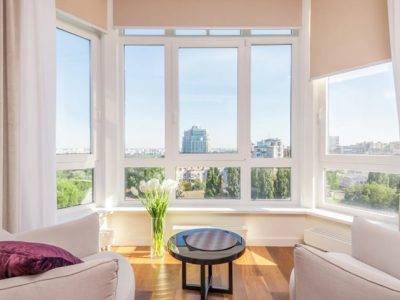Soundproofing a room is an essential requirement for many people, be it their home or office, especially if they want to create a peaceful and quiet environment. Soundproofing isn’t as daunting as it may initially appear; there are several easy room soundproofing hacks that you can perform on a budget. In this blog post, we will share with you some valuable tips and tricks that you can use to soundproof your room or office.
Whether you’re a professional musician looking to practice without creating noise disturbances, or someone who wants to create a peaceful working environment, we’ve got you covered. We’ll walk you through everything you need to know so you can soundproof your room effectively. From using acoustic panels to adding carpeting to your walls, we’ll provide you with a complete rundown of various soundproofing methods.
- Install heavier curtains or drapes
One of the easiest room soundproofing hacks that you should know is to install heavier curtains or drapes to your windows. Curtains and drapes that have a thicker, heavier fabric can help absorb sound waves and reduce the amount of noise that enters or exits your room. Look for curtains or drapes that have a flannel or velvet-like material since they are dense and heavy.
You can also opt for curtains with multiple layers of fabric to further enhance the soundproofing abilities. Mount the curtains tightly to the wall and ceiling to limit any gaps where sound can leak through and dampen the effectiveness of this hack. This simple and affordable hack can make a significant difference in reducing the noise levels in your room, providing you with a more peaceful and quieter environment.
- Hang tapestries or blankets on walls
One of the easiest and most affordable ways to improve the acoustics of a room is to hang tapestries or blankets on walls. In addition to serving as a decorative touch, they can also act as a sound barrier that absorbs echoes and reduces the amount of sound that bounces off the walls. This hack is especially useful in small spaces where sound can easily become trapped and create a reverberating effect.
However, it is important to choose fabrics that are thick and heavy in order to create an effective barrier. Additionally, it is essential to ensure that the tapestries or blankets are properly hung and secured to the walls to avoid any safety hazards. Overall, utilizing this simple hack can have a noticeable impact on enhancing the sound quality of a room without breaking the bank.
- Utilize rugs and carpets
The acoustic properties of your room can greatly affect sound quality, making it important to minimize excess noise and achieve a comfortable audio environment. One of the simplest and most effective techniques for soundproofing a room is to utilize rugs and carpets. Carpets and rugs are great sound-absorbing materials that help to reduce sound reflections and echoes.
Placing a large area rug on the floor or hanging carpets on walls can make a huge difference in reducing reverberation and overall noise levels. In addition to their sound-absorbing qualities, rugs and carpets also add a decorative element to your space, enhancing the ambiance and creating a cozy, inviting atmosphere. Overall, incorporating rugs and carpets into your room design can be an easy and effective way to improve the acoustics of your space.
- Add acoustic foam sound panels
When it comes to soundproofing a room, adding acoustic foam sound panels is a popular and effective solution. These panels are designed to absorb sound waves, reducing echoes and reverberations within a space. They come in a variety of shapes and sizes, and can be installed on walls, ceilings, and even floors to achieve the desired level of soundproofing.
Acoustic foam sound panels are particularly useful for home recording studios, home theaters, and in rooms where music is practiced. By strategically placing the panels in the room, unwanted noise can be minimized and the overall sound quality can be enhanced. Some panels are even designed with decorative patterns and colors, allowing them to blend in with the room’s interior design.
- Place furniture strategically for maximum sound absorption
One effective way to improve the acoustic properties of a room is to strategically place furniture for maximum sound absorption. This hack is particularly useful in rooms that are already furnished or those that can’t be completely emptied out. When furniture is placed properly, it can serve as absorptive material to reduce unwanted echoes, reverberation, and noise transmission.
The key is to use furniture with soft and absorbent materials such as upholstered chairs, couches, curtains, carpets, and rugs. These materials can easily trap and absorb sound waves, making your room quieter and more comfortable.












Comments